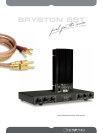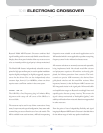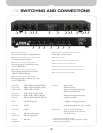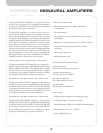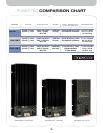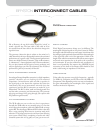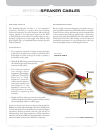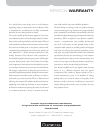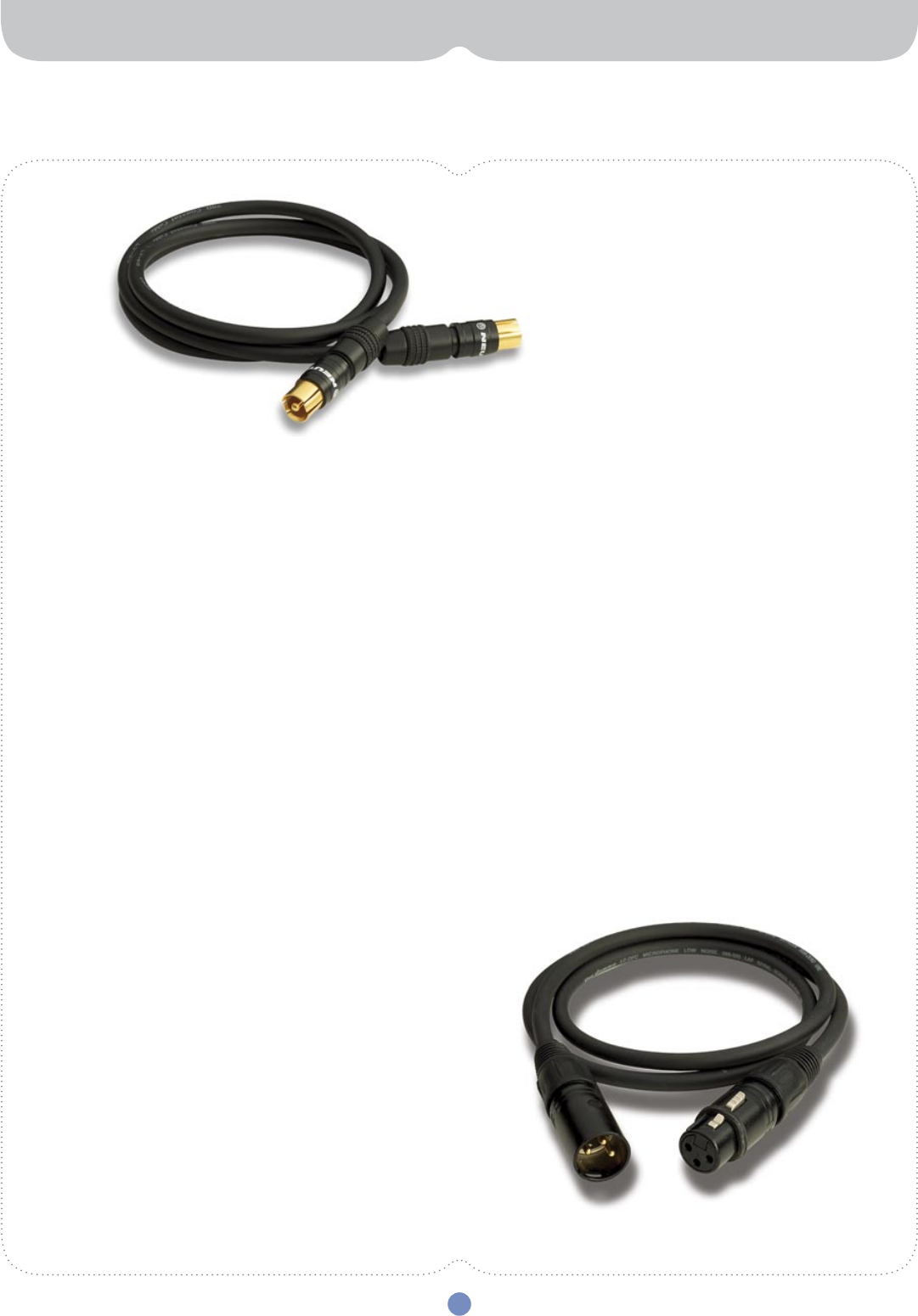
We at Bryston, do not think cables should be ‘voiced’ to
sound a specific way. The best cable is NO cable at all so
we contend that the best cable is the cable that changes the
signal the least.
The geometry (where the plus is relative to the minus) of a
cable determines the inter-relationship between the measured
performance of a specific cable. These measured performance
criteria are call the ‘Primary Constants’. They are R-resistance,
L- inductance, C- shunt capacitance and G-shunt conductance.
You can play around with all types of exotic packaging and
add-on appendages you like but ultimately the measured
performance (primary constants) tell the tale.
COAX INTERCONNECT CABLES
An analogue Preamp/Amplifier connection is a ‘high impedance
interface’ therefore; you are looking for low measured
Capacitance. An interconnect cable acts like a capacitor in
the signal path so the better that capacitor the better the
interconnect. We use an interconnect wire with (very low
capacitance) and the RCA connectors are made for us in
Switzerland. The RCA cables ‘make and break ground’ first
and last when connecting and disconnecting. This prevents
ugly pops and bangs from going through your system with
the possible negative results.
XLR INTERCONNECT CABLES
The XLR cables we use are also very low in capacitance.
Actually the XLR cable we are currently using is in fact low
noise balanced microphone cable with 100% shield coverage
against RF. The advantage of Balanced XLR cables is that they
have a noise canceling effect know as ‘common mode noise
reduction’. This helps prevent noise and hum from affecting
your system. With today’s complexity of audio and video
surround systems this is a big plus, so if you ‘got em-use em’.
DIGITAL CABLES
VIDEO CABLES
Video cables also operate at very high frequencies - typically
5-6 MHz for Composite and S-Video and 8-30 MHz for
Component Video depending on the scan rate and resolution.
So again understanding the wavelengths of the signals and
interfaces involved is important.
5
BRYSTON INTERCONNECT CABLES
BRYSTON
ANALOG/DIGITAL/VIDEO CABLE
BRYSTON
BALANCED XLR CABLE
With ‘Digital’ interconnects things are a lot different. The
wavelengths of digital signals are ‘very short’ (same for FM) so
the lengths and terminations are much more critical than with
the analogue signals previously discussed. When the wavelength
of the signal the cable is used for approaches 1/30th of the
length of the cable then transmission line effects start to appear
and much more attention has to be paid to the connection
and termination. If not then reflections and cancellation of
data is a real possibility. For instance the AES/EBU digital
connection on the back of the Bryston SP2 should be used
with a cable having an impedance of 110 ohms.



